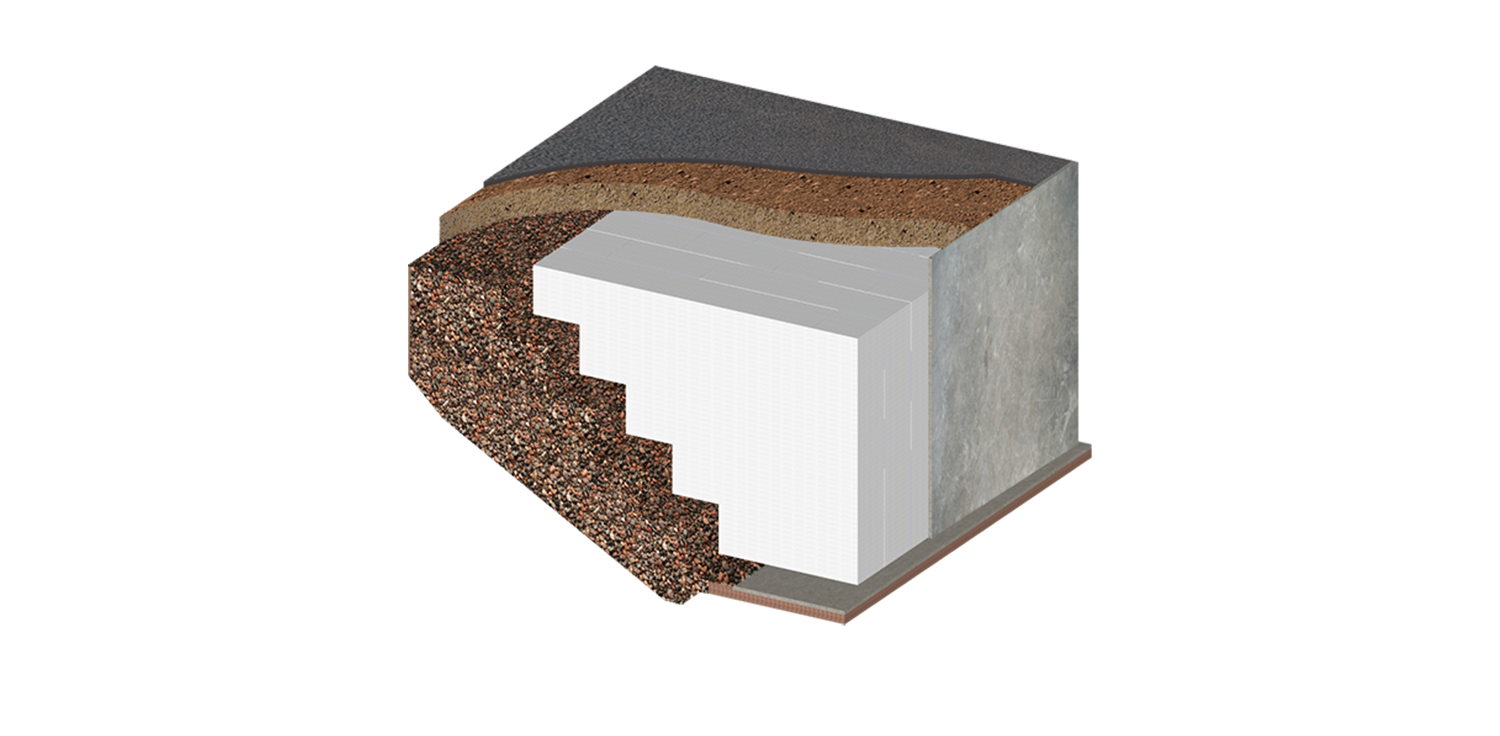Retaining Walls
Since GeoSpec fill material density is low relative to standard aggregate backfill materials, vertical stresses that develop behind a retaining wall or abutment are much lower than for an aggregate backfill. Lateral forces exerted by GeoSpec fill material are also minimal because the Poisson's ratio of GeoSpec fill material within its elastic stress range is close to zero and, therefore, is significantly less than the Poisson’s ratio for soil.
The light weight of GeoSpec fill material results in reduced vertical stresses. As well, the tendency of the interlocked GeoSpec fill material to settle as a block with a slight tilt away from the wall face reduces potential lateral load on a wall.
The low mass and relatively high compressibility of GeoSpec fill material may also offer an additional advantage by limiting horizontal forces against retaining structures. The transition zone between the GeoSpec fill material and soil should be free draining. Adequate subsoil drainage must be provided to prevent development of hydrostatic pressure and buoyancy.
In addition, the insulating properties of GeoSpec fill material will reduce the effects of lateral earth pressure resulting from freezing air temperatures. The thermal insulation properties of GeoSpec fill material will prevent freezing and expansion of the soil behind the retaining wall, as well as protect the retaining wall drainage system.



